EVENING ON THE MEADOW BY THE SIDE OF THE ROAD
Yesterday, I drove a couple of kilometers to the village of Liznjan, bought a few things in a small grocery store there, and then continued towards another village, the one called Shishan. After passing through that village without stopping, I reached one of the meadows a few kilometers further and parked the car by the side of the road. At that point, I must have been about seven or eight kilometers from home. The late afternoon was turning into evening pretty fast, so I had only a couple of hours to ramble around and explore the amazing things hidden in the tall grass.
As always at this time of the year, I found more than I expected, so you can expect quite a few nice and colorful things from this post, especially if you like small invertebrates like spiders and insects.
This is Plebejus argus, commonly known as the silver-studded blue, a small butterfly from the Lycaenidae family. Many diurnal species are easy to photograph in the evening when they get ready to spend the night calmly resting on the stems or ears of the grass.
Shedding of the old exoskeleton is another thing easily seen and photographed in the evening. I mean, it can happen early in the morning or in the middle of a cloudy day, but from what I saw, there is a much bigger chance to come across it at the end of a spring or summer day. This Tettigonia viridissima nymph ...
... is already out of its old skin and is busy devouring it. The exoskeleton has enough nutrients to be worth chewing and recycling.
I observed the young bush cricket for only a couple of minutes.
After this photograph, I continued my walk through the grass.
These days, the crimson clover (Trifolium incarnatum) is in bloom. The flowers add plenty of red and pink to the intense green of the meadow, making the ordinary roadside place look pretty and memorable.
In this tryptich of shots taken through the macro lens, you can take a better, more up-close look at those small flowers.
This is just an ordinary portrait of an ordinary crimson clover flower head. It took me a bit to find a flower head isolated enough from the others of its kind to make this shot possible. I found it on the edge of the meadow, near the line of shrubs and small trees that look like a thick green wall now in spring.
A bit later, while photographing another flower head, I noticed a tiny green dot on its top, so I mounted the macro lens to see what that was.
It looks like an aphid, don't you think?

Yep, a tiny aphid in one of those pinky flowers. The scientific name of the species is Acyrthosiphon pisum.
The flowers shown in the following photograph are very small, more or less the size of the aphid you just saw.
These are the Valeriana locusta flowers.
I came a bit closer with the macro lens in this shot. Valeriana locusta, commonly known as the cornsalad or lamb's lettuce, is a tasty edible plant with small but tasty leaves that can make a great salad.
Here you can see a beautiful iridescent fly resting on the ear of grass. The scientific name of the species is Chloromyia formosa. It belongs to the Stratiomyidae family. The adult flies feed on nectar and pollen, while the larvae live in the soil where they feed on the decaying plant material.
The iridescence doesn't look good in harsh light, so I couldn't use the small, unsofisticated, built-in flash of my camera in the low-light conditions. Therefore, getting the above photograph was a relatively long and frustrating process. The fly was very calm and patient, fortunately.
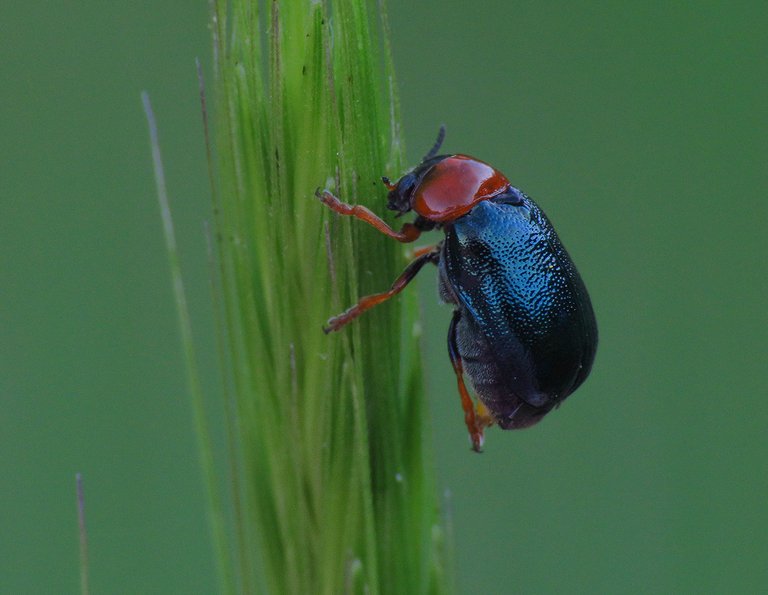
A bit later, and about five or six meters further, as the light was getting even lower, I came across another shiny insect that had to be photographed in ambient light.
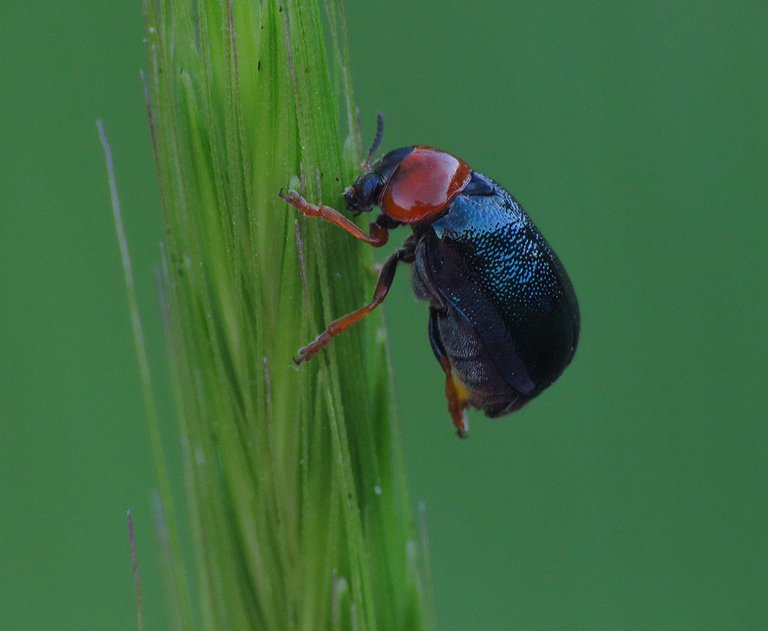
This is the Smaragdina salicina, a beetle from the Chrysomelidae family.
Here you can see a big bunch of recently hatched Araneus diadematus spiderlings.
They will live together until they grow up a bit.
Araneus diadematus is an orb-weaving species from the Araneidae family.
Neoscona adianta spiderlings are still considerably smaller than adults, but they are much bigger than Araneus diadematus you just saw in the previous three photographs, and they live a solitary life.
Each young spider builds its web.
This one has caught a prey, some bug from the Miridae family. The following photograph ...
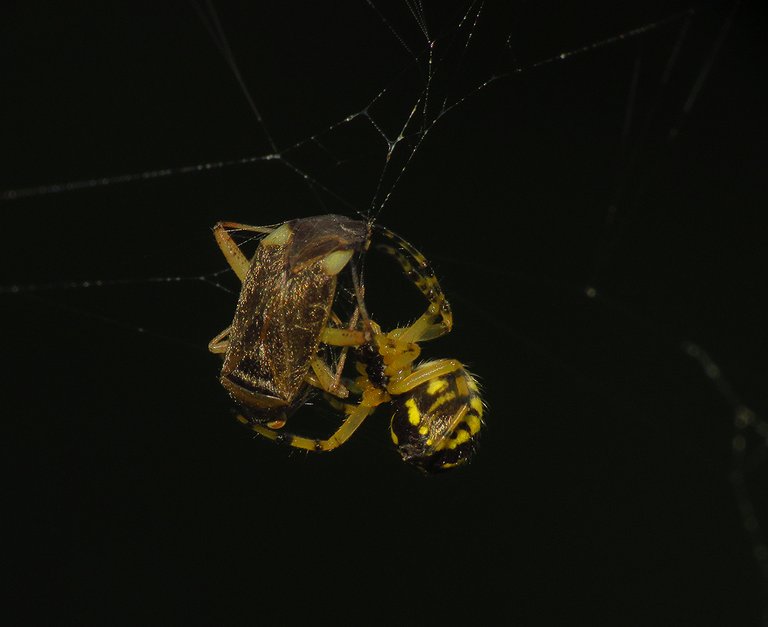
... was taken a minute earlier when the spider started enveloping the prey in the silk. The upper side of the bug is visible here, so I can confidently say that the scientific name of the species is Closterotomus annulus.
While photographing the Neoscona adianta from under the web, with the sky as backdrop, I had enough light to get a sharp picture in natural light if the spider isn't moving.
Through a combination of flash and ambient light, I ended up photographing all I needed to get the visuals for the story.
Neoscona adianta belongs to the Araneidae family and is probably the most common species from that family here in my area. It appeared in almost every post I published this spring, so far.
Sometimes, when resting in the grass, the young Neoscona adianta spiders build small tent-like structures very different from the orbs for hunting. Here you can see a spider in one of those little shelters.
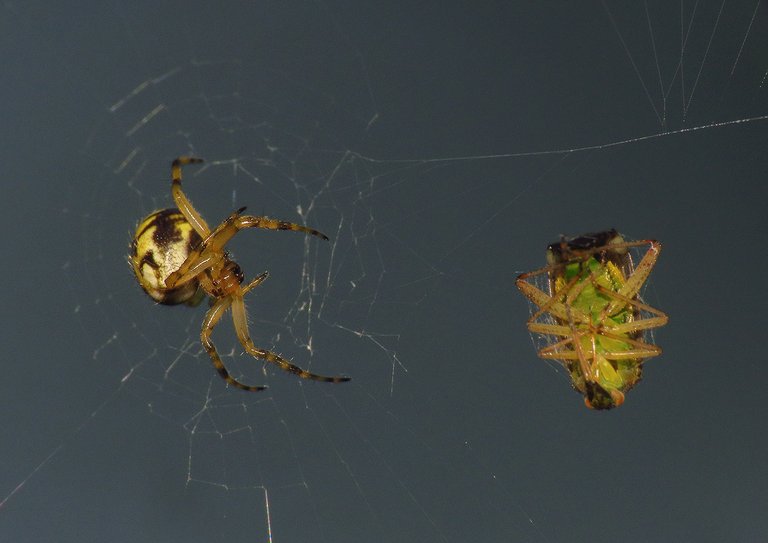
And that's it. I mean, the post isn't over as it usually is when those "nd that's it" words show up. That's it, only when it comes to Neoscona adianta. The following picture ...
... is here to allow you a break from the spiders and the macro view in general. It is a wide shot that shows the colors of the meadow. On one of the clover flower heads in the foreground ...
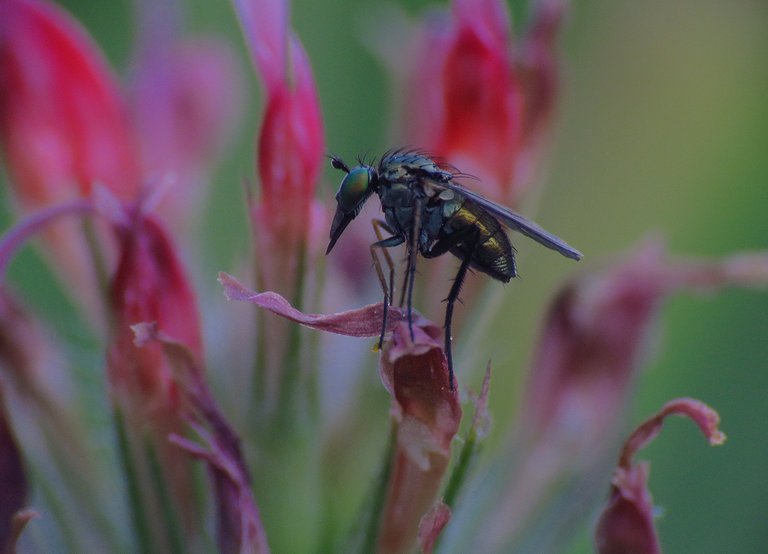
... I found a very small fly I had never seen before. The light was very low, but since the insect was iridescent, I had to find a way to get a shot in ambient light. Fortunately, the clover isn't tall, so I could lean the camera on my knee and add a bit more stability for the relatively long exposure. A few minutes later ...
... I noticed another fly of the same kind. This one was resting on the leaf of grass, a couple of meters further.
Today, after a relatively short search on the Internet, I found out that the scientific name of the species is Ortochile nigrocoerulea. It belongs to the Dolichopodidae (long-legged flies) family.
Most adults Dolichopodidae are predators, scavengers, or cleptoparasites, so I thought at first that this one was too, especially considering the elongated mouthparts that look like something made for piercing or stabbing like a dagger.
I was surprised to learn that Ortochile nigrocoerulea is associated with flowers and has been seen feeding on nectar and pollen.
However, it seems that there isn't much known about this species, or the knowledge isn't prominent on the Internet.
In these two shots, the fly is using the brush-like structures on its forelegs to clean its dagger-like mouth.
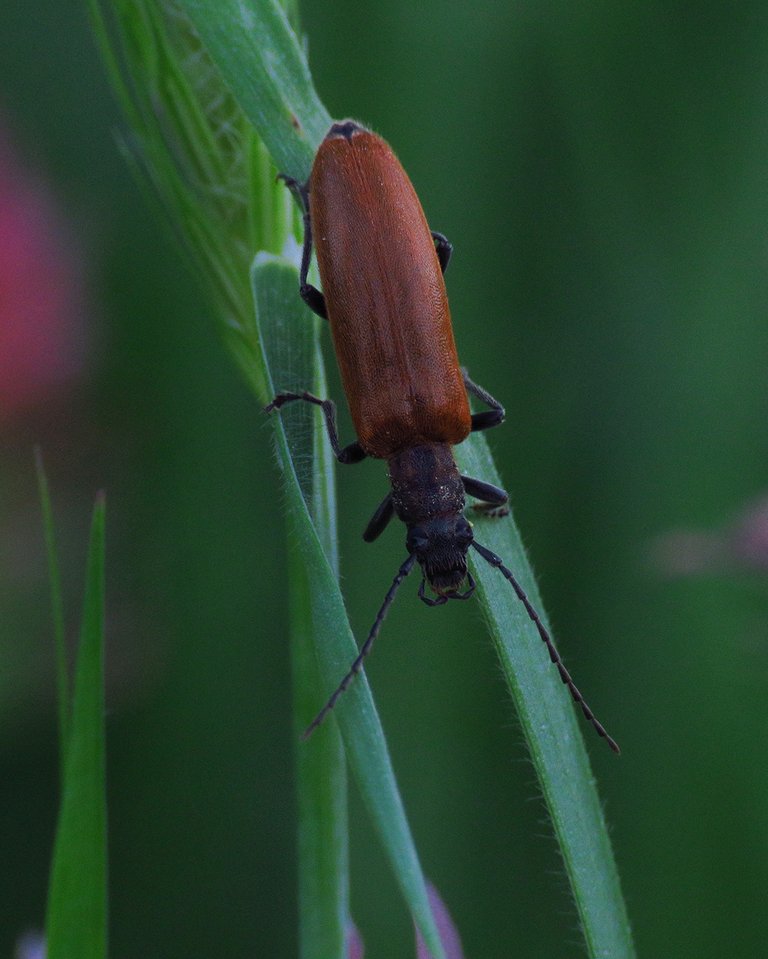
This relatively big beetle is another species I don't remember seeing before.
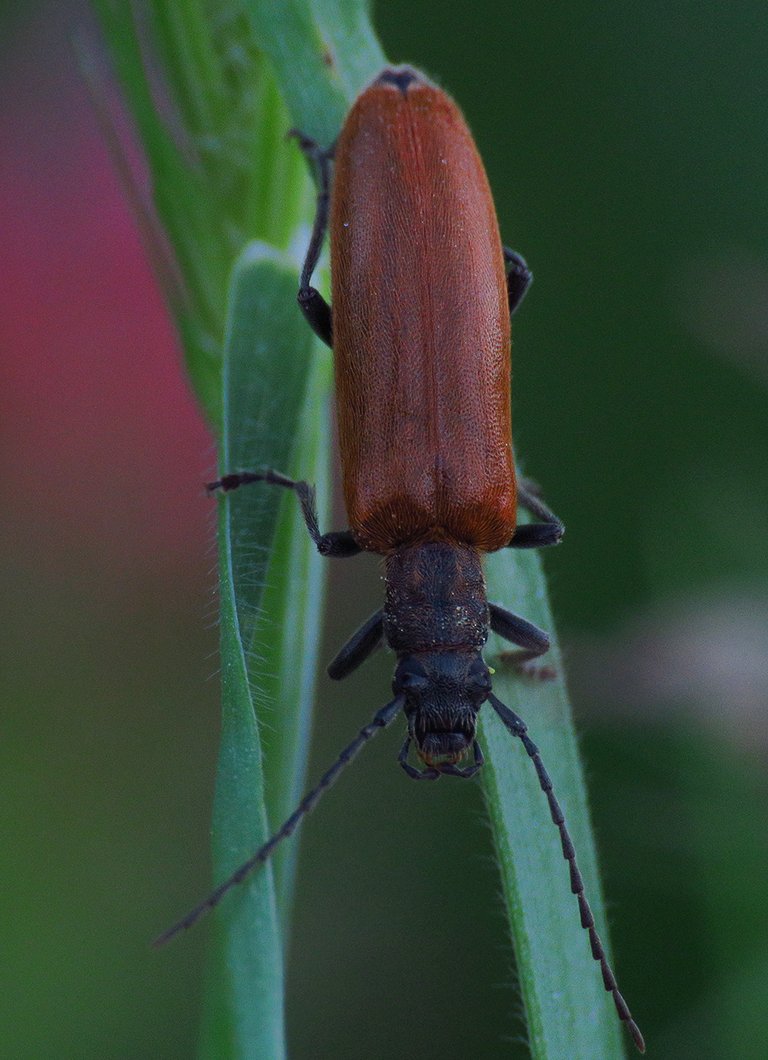
Its scientific name is Sparedrus testaceus. It belongs to the Oedemeridae family. The Oedemeridae I'm familiar with here in my area are all much smaller, so despite the shape of Sparedrus testaceus being fairly similar to those other species, I would have never guessed the family without the Internet.
With two encounters with local species unknown to me, this was a hell of an evening. It was a very exciting walk through the grass.
At some point on my evening walk ...
... I came across this dramatic scene.
A spider in the fangs of a spider.
Both spiders were approximately the same size ...
... and of the same species.
Cannibalism isn't rare among spiders, especially the sexual one related to mating, which ends with the male being eaten.
When it comes to Pisaura mirabilis, the species from the Pisauridae family shown in these photographs, cannibalism quite often occurs in all kinds of circumstances.
In this specific case, a female has killed a male. Pisaura mirabilis is a very common spider here in my area, but an opportunity to photograph a scene like this doesn't arise that often.
In the following photograph ...
... you can see a spider I encounter very rarely. I saw it only a few times so far.
It belongs to the Theridiidae family. The name of the species is Enoplognatha afrodite.
Many Tettigonia viridissima nymphs were jumping all around the meadow. They are very numerous these days. In this and the following shot ...
... you can see two of them sharing the same ear of grass.
This is the Emmelina monodactyla ...
... a moth from the Pterophoridae family. Like many other moths, it becomes active at dusk.
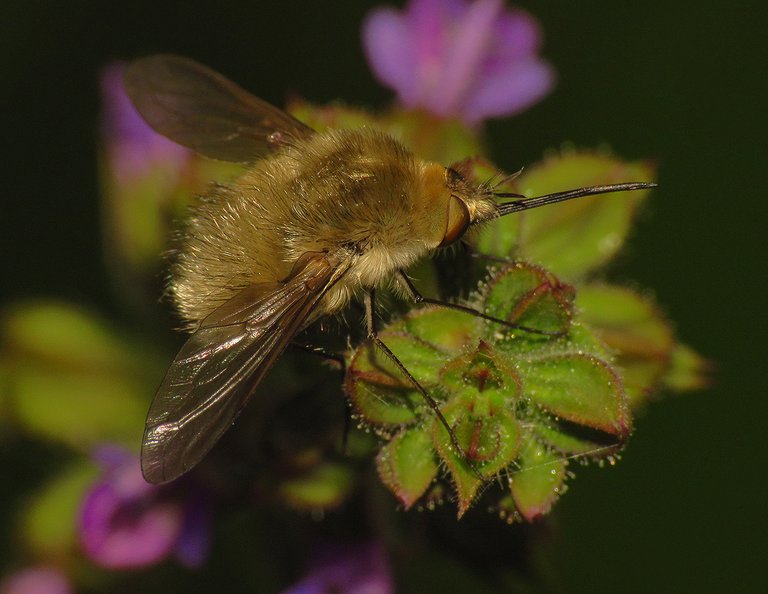
As the moths start their active hours, diurnal insects go to rest. Here you can see a bee fly on the plant where it will probably spend the whole night. The scientific name of this furry species from the Bombyliidae family is Bombylius minor.
The last photograph of today's post shows the Bruchidius pusillus, a tiny beetle from the Bruchidae (seed beetles) family, sleeping on the ear of grass. Hope you enjoyed the journey - good night.
The following links will take you to the sites with more information about the protagonists of today's post. I found some stuff about them there.
https://en.wikipedia.org/wiki/Silver-studded_blue
https://en.wikipedia.org/wiki/Tettigonia_viridissima
https://en.wikipedia.org/wiki/Trifolium_incarnatum
https://en.wikipedia.org/wiki/Acyrthosiphon_pisum
https://en.wikipedia.org/wiki/Valeriana_locusta
https://www.naturespot.org/species/broad-centurion
https://en.wikipedia.org/wiki/Smaragdina_salicina
https://en.wikipedia.org/wiki/Araneus_diadematus
https://en.wikipedia.org/wiki/Neoscona_adianta
https://www.inaturalist.org/taxa/566553-Closterotomus-annulus
https://www.inaturalist.org/taxa/1143563-Ortochile-nigrocoerulea
https://www.inaturalist.org/taxa/734814-Sparedrus-testaceus
https://en.wikipedia.org/wiki/Pisaura_mirabilis
https://www.inaturalist.org/taxa/789074-Enoplognatha-afrodite/browse_photos
https://en.wikipedia.org/wiki/Emmelina_monodactyla
https://en.wikipedia.org/wiki/Bombylius_minor
https://www.inaturalist.org/taxa/333899-Bruchidius
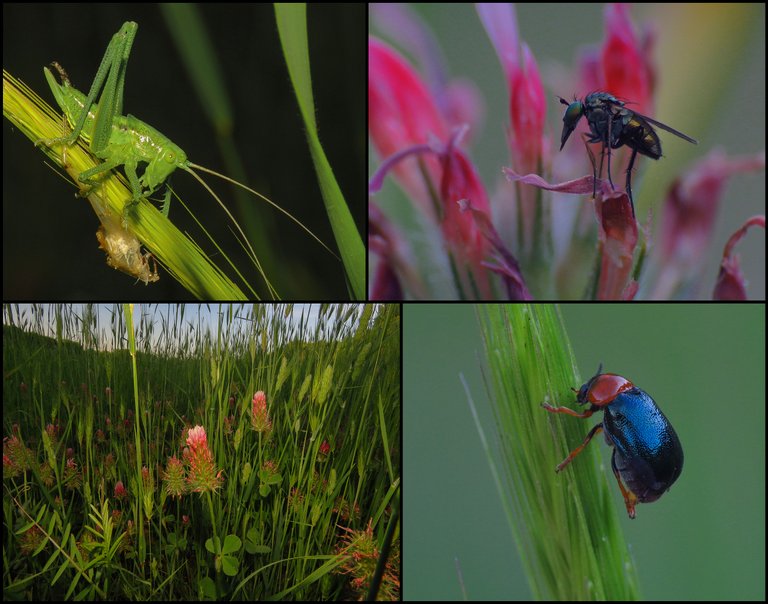
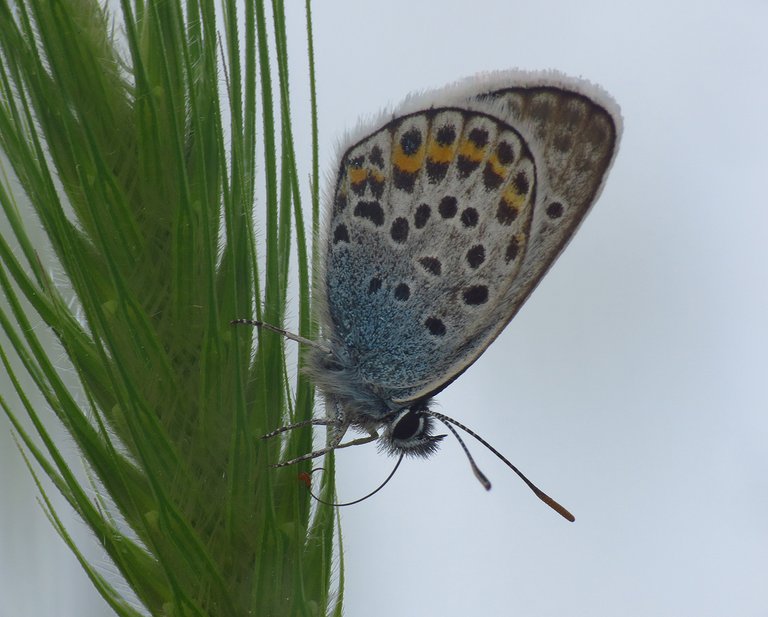
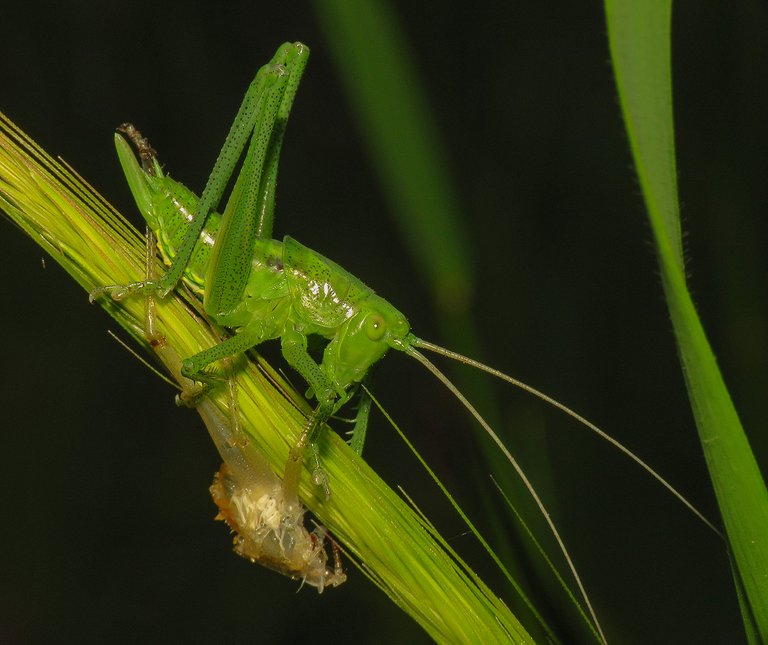
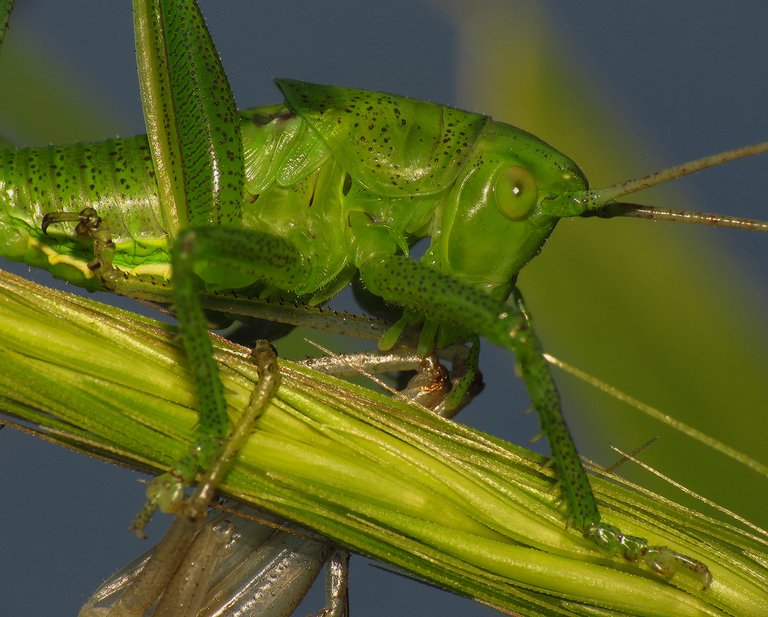
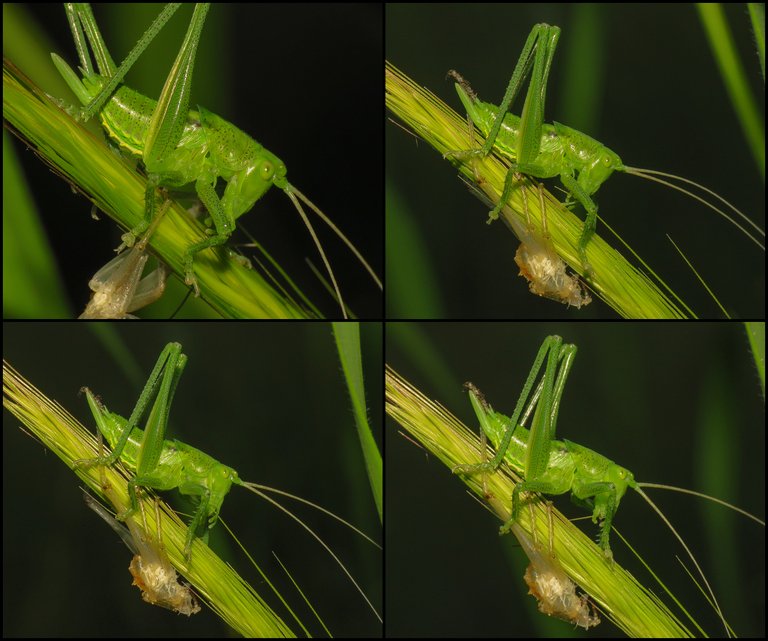
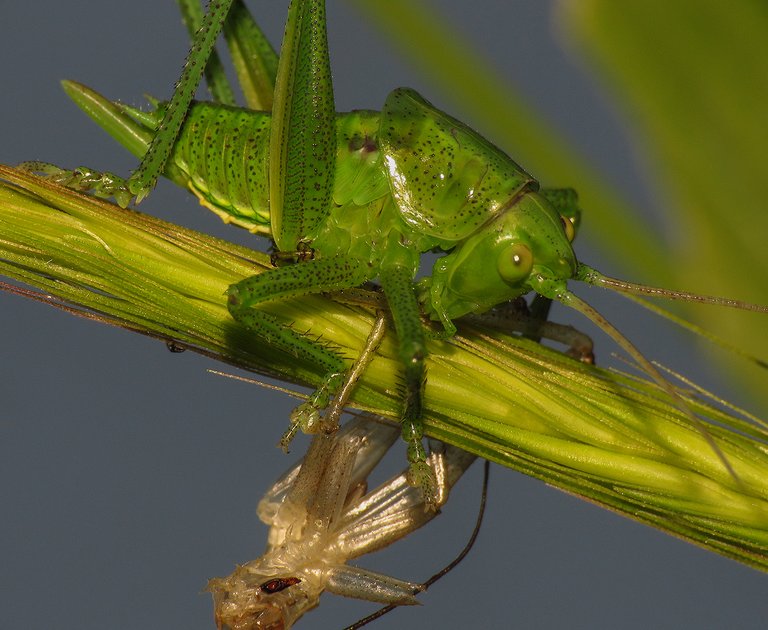
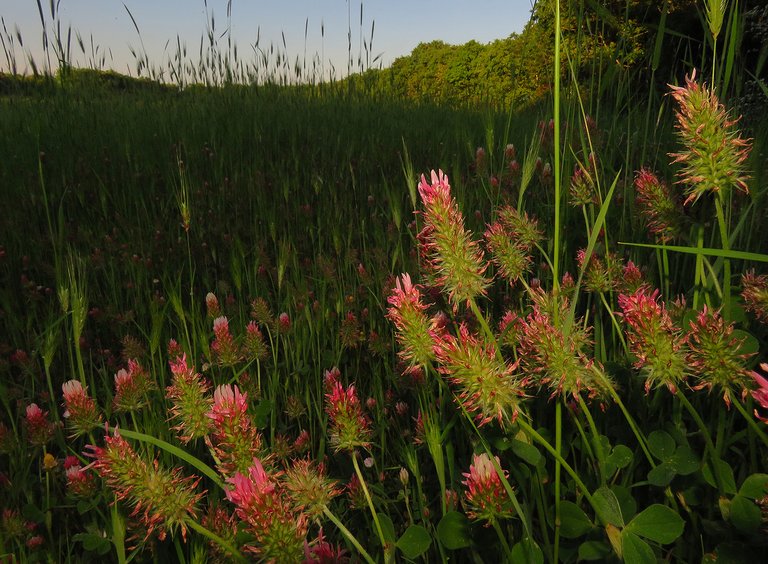
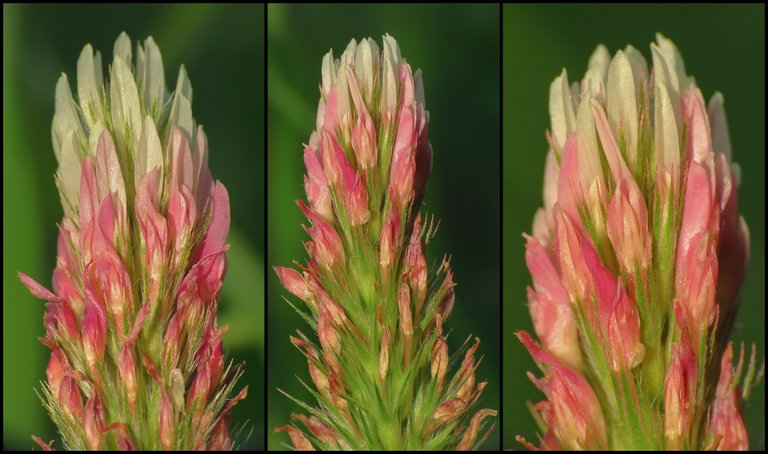
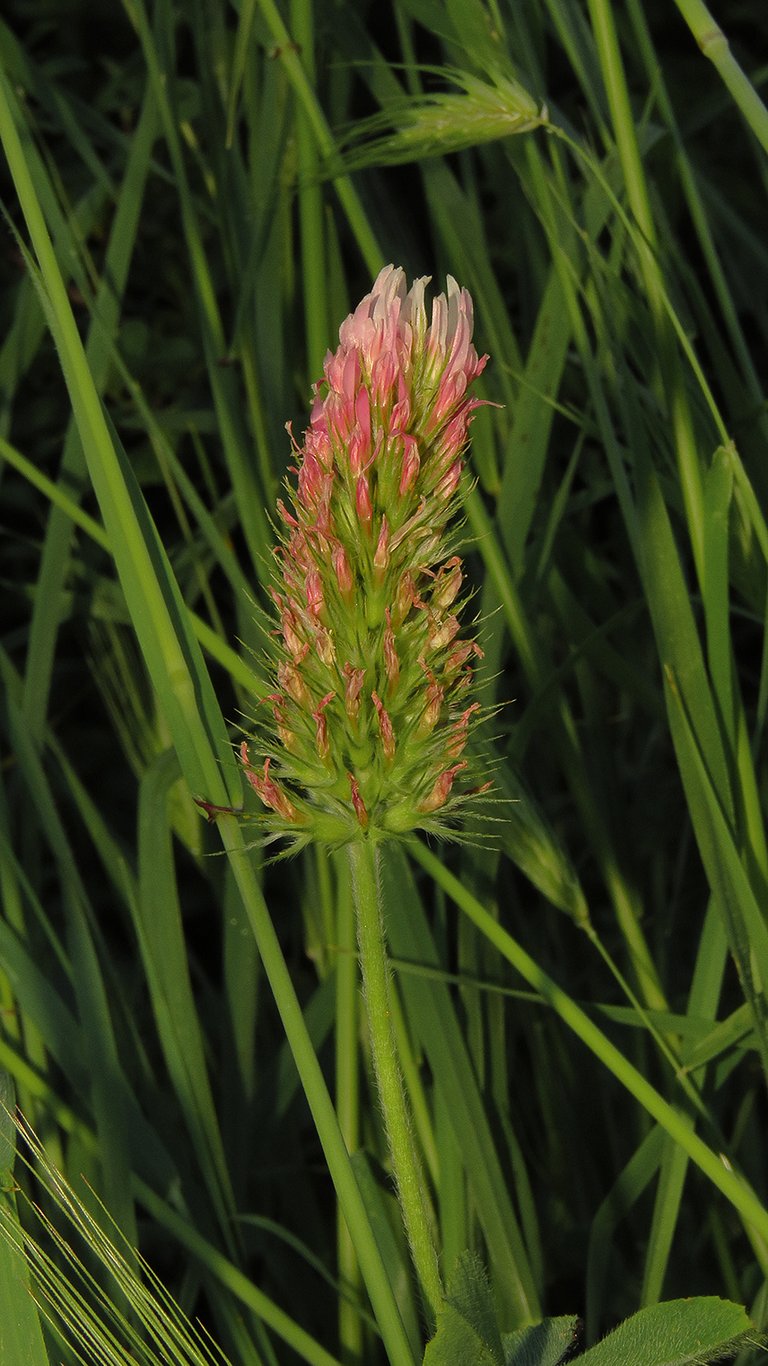

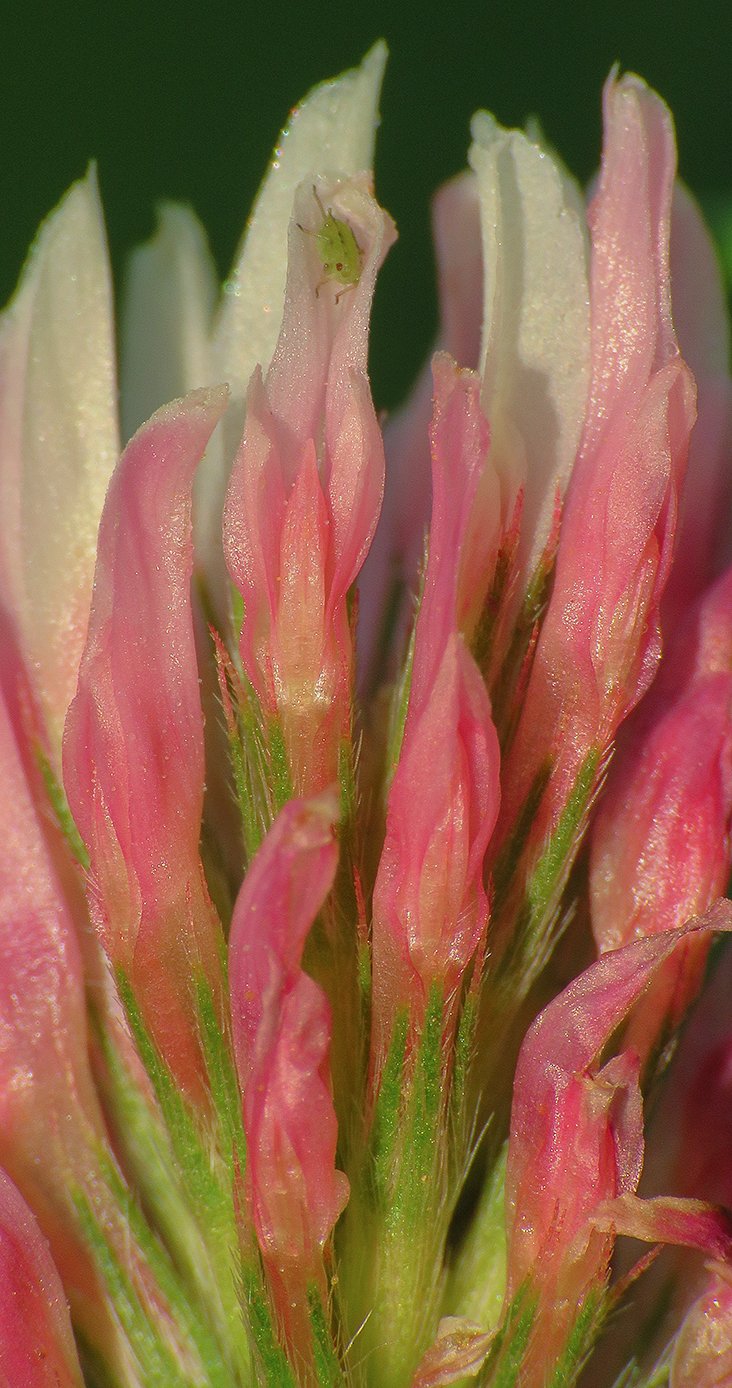
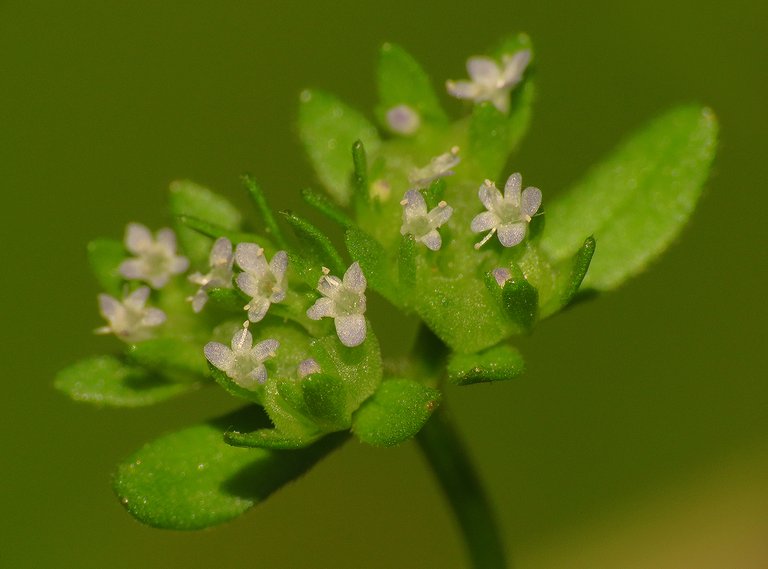
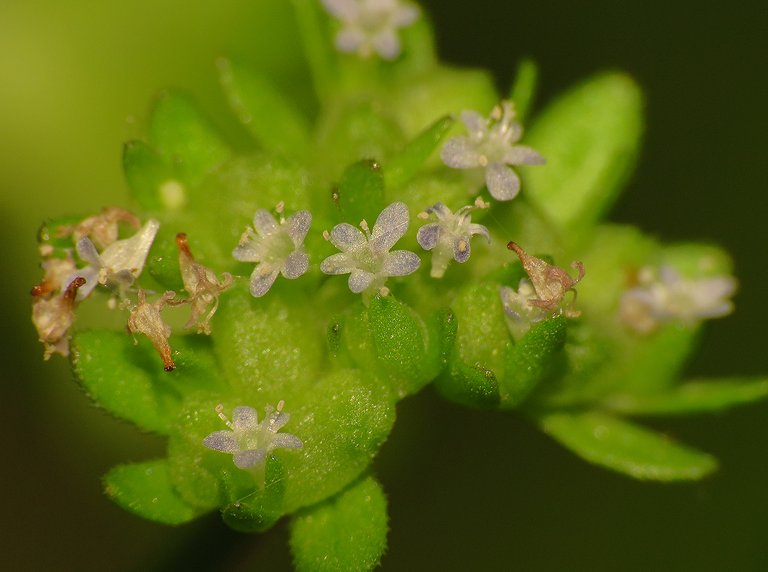
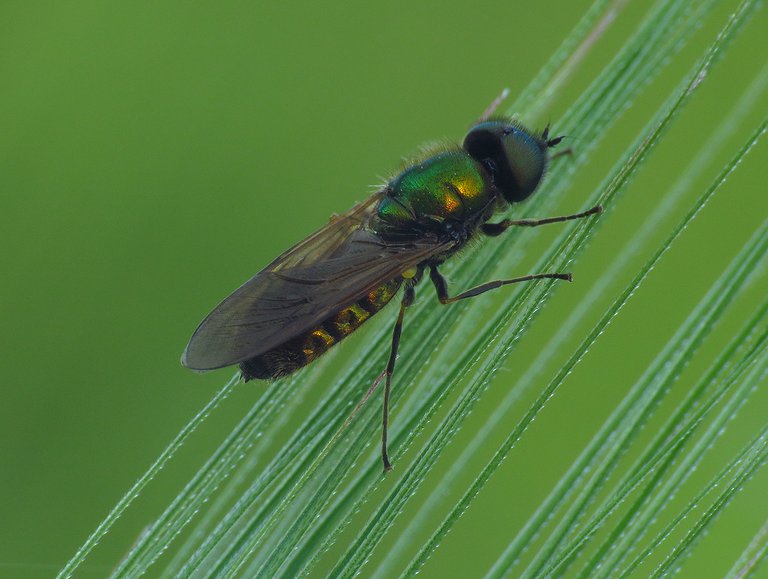
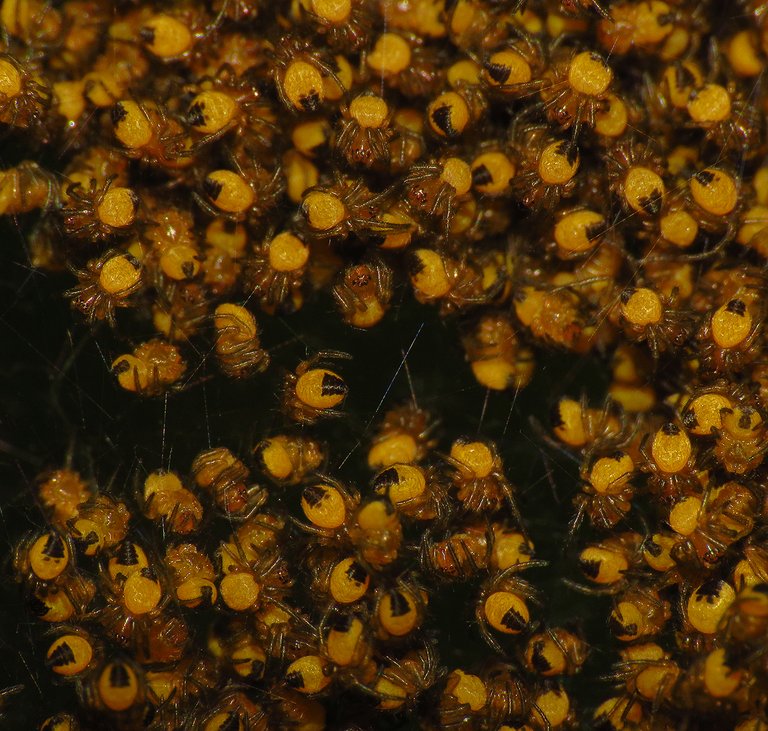
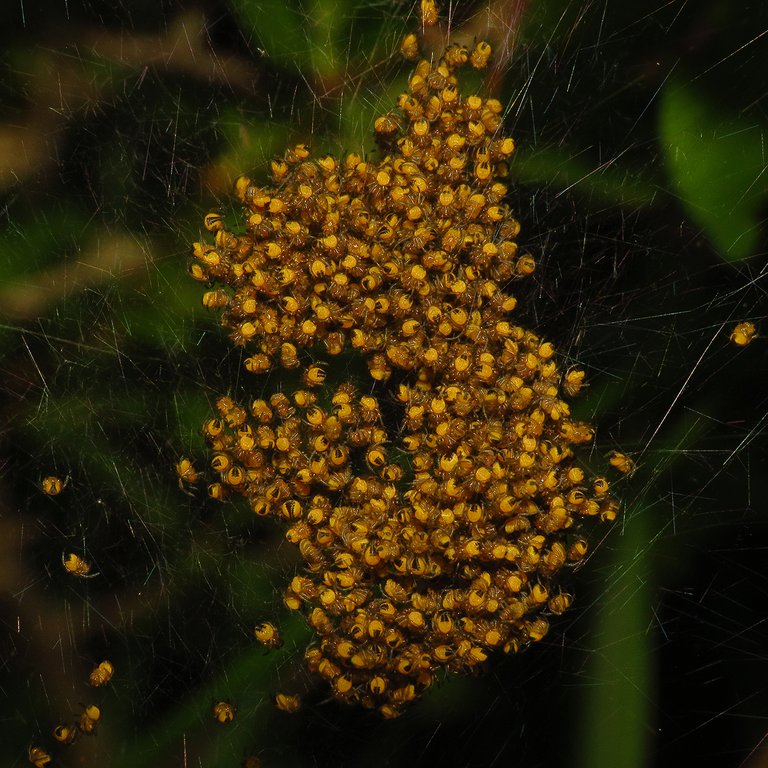
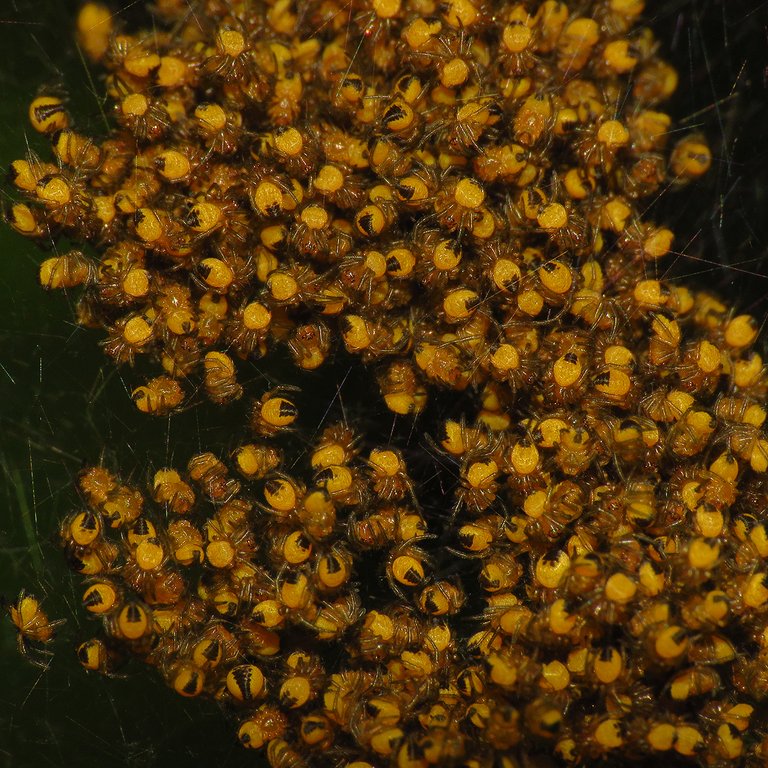
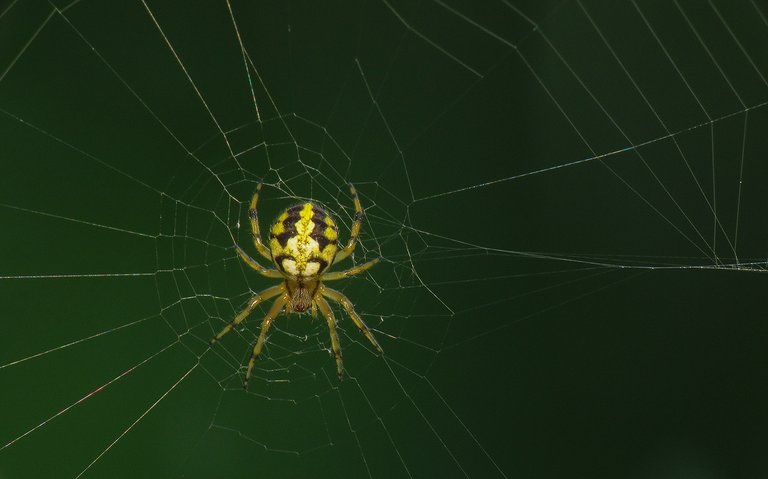
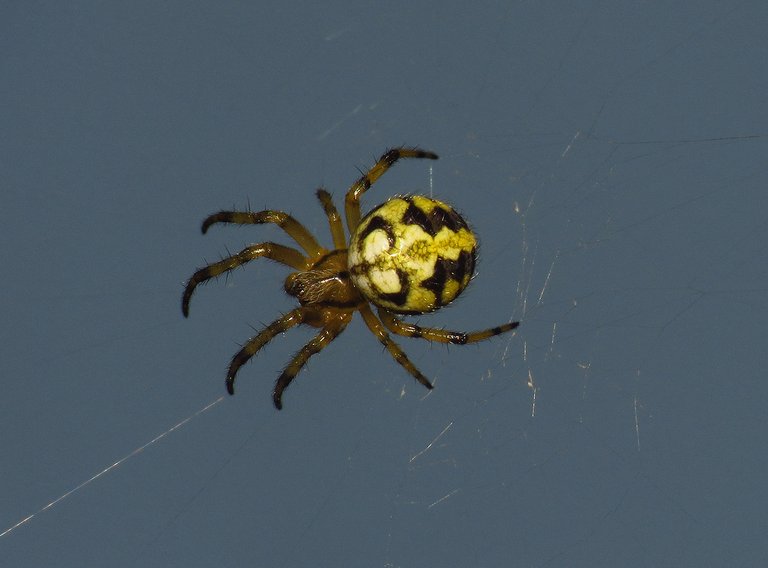
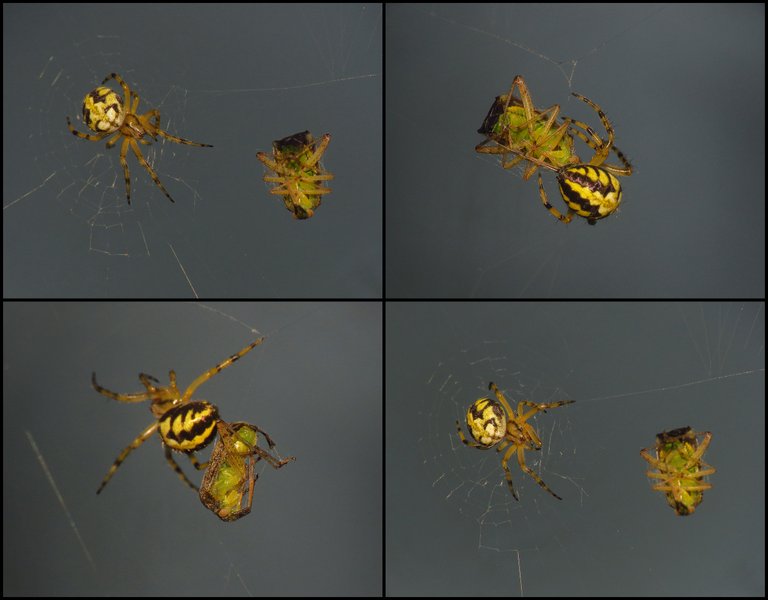
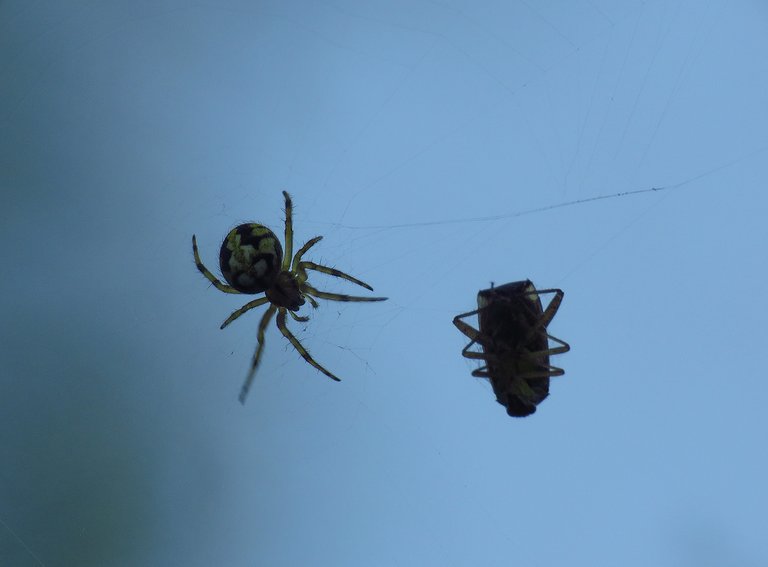

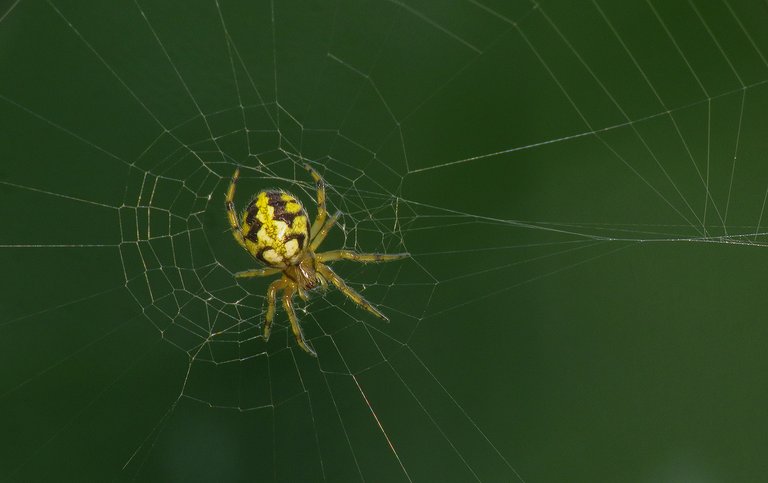
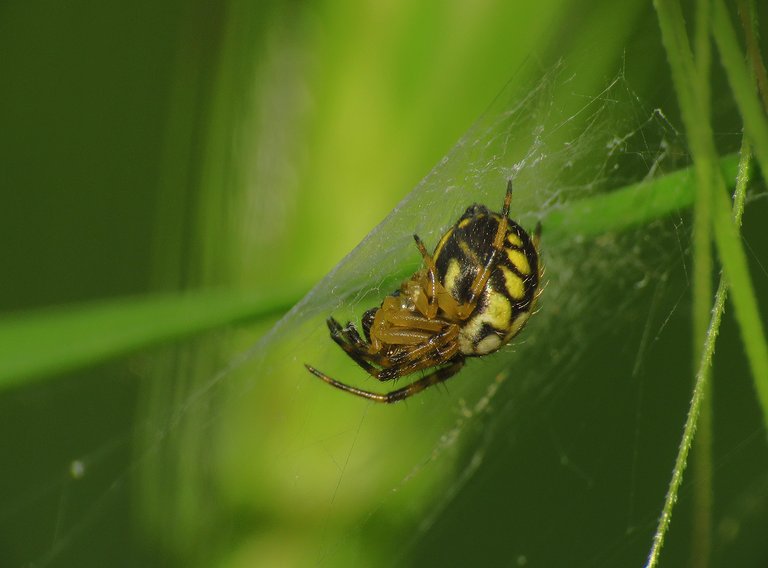
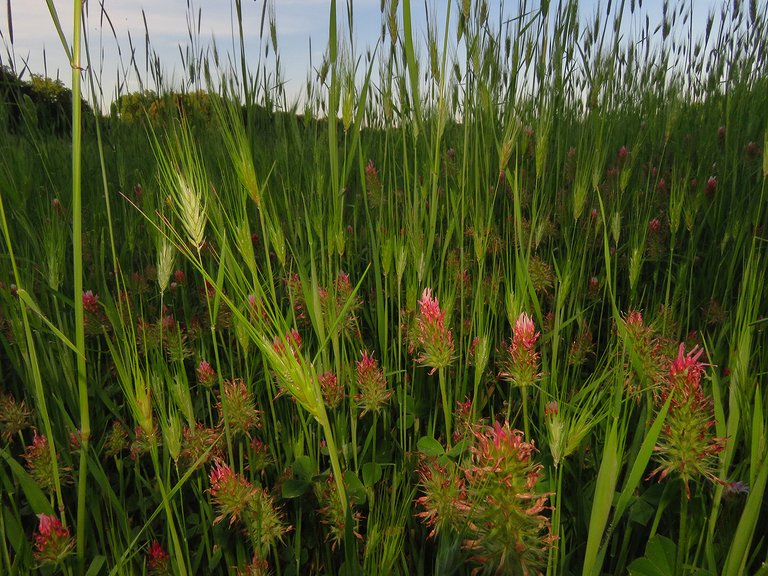
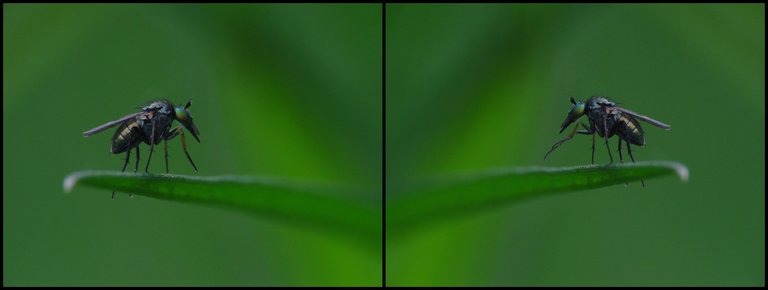
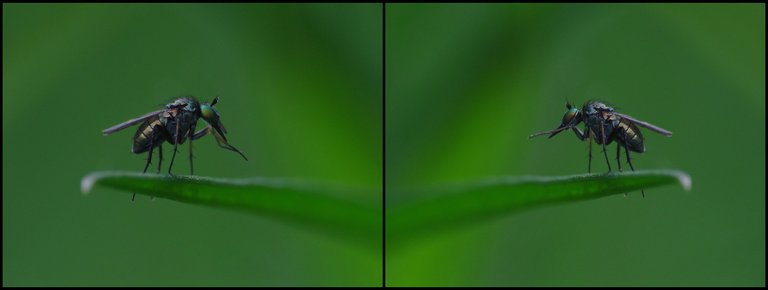
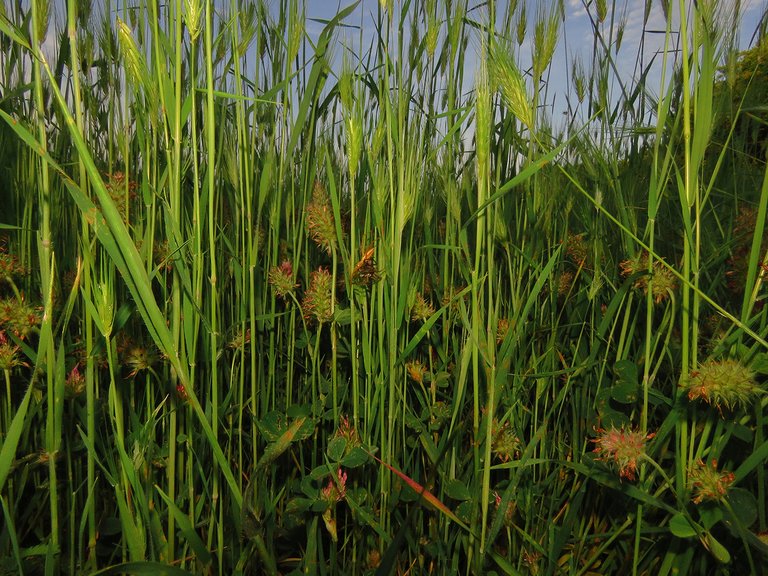
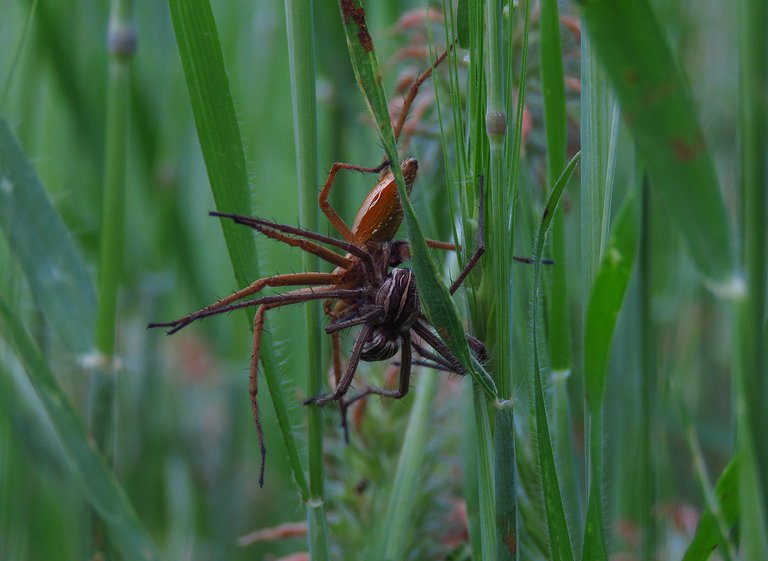

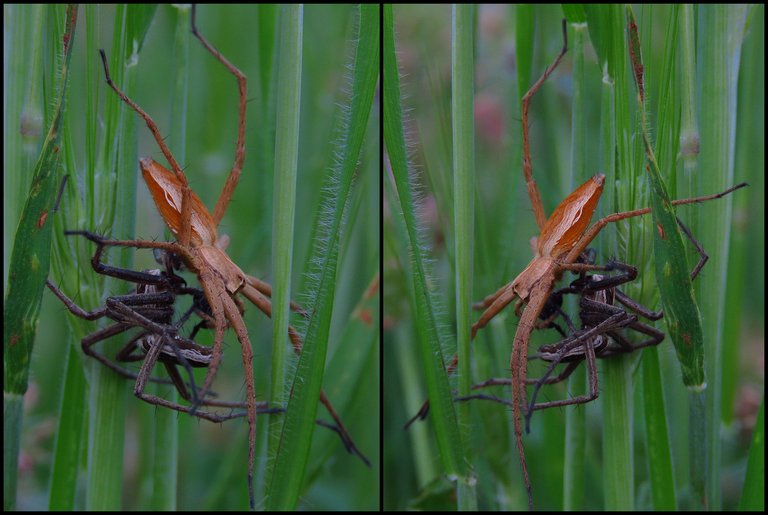


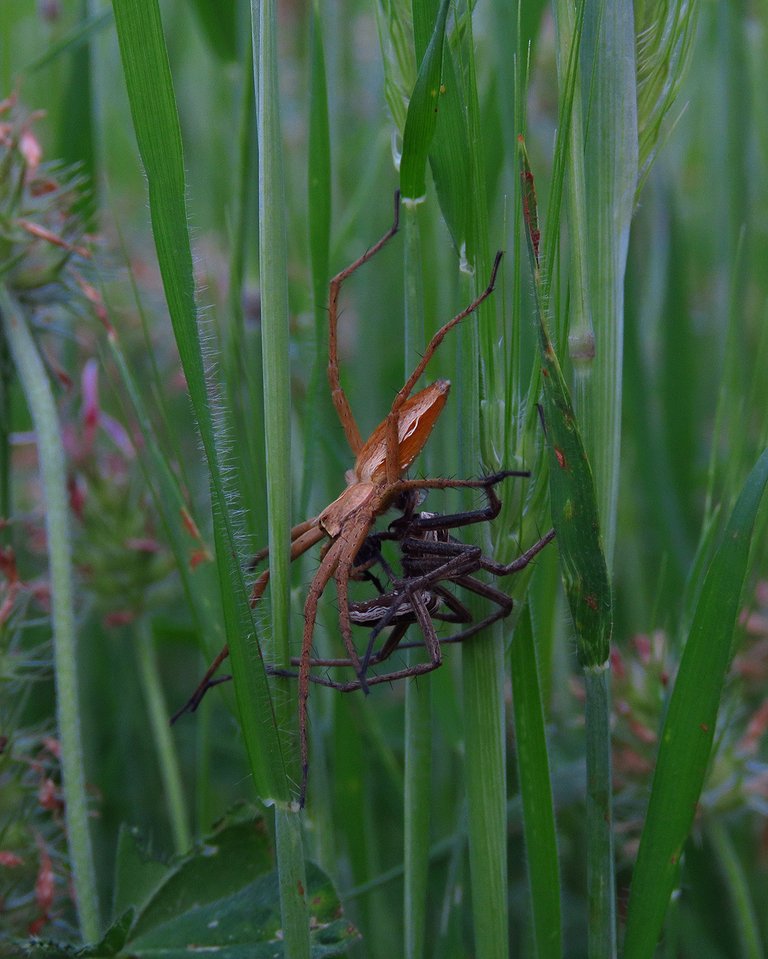
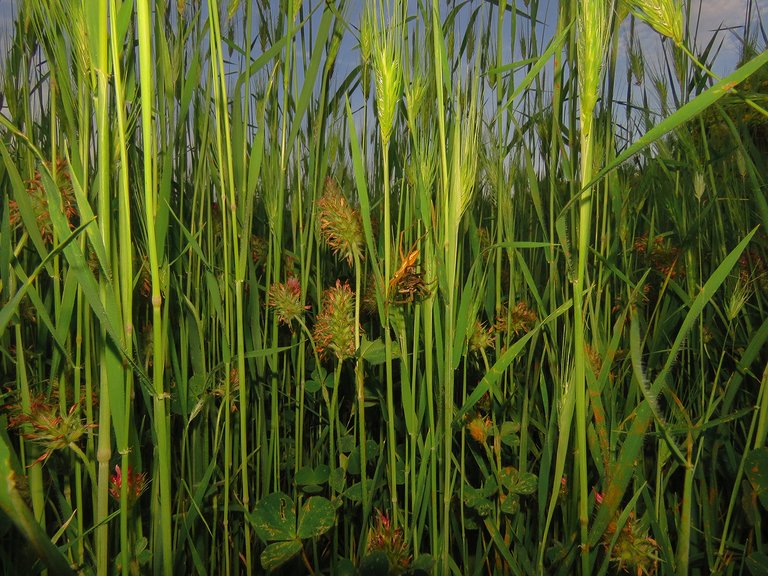
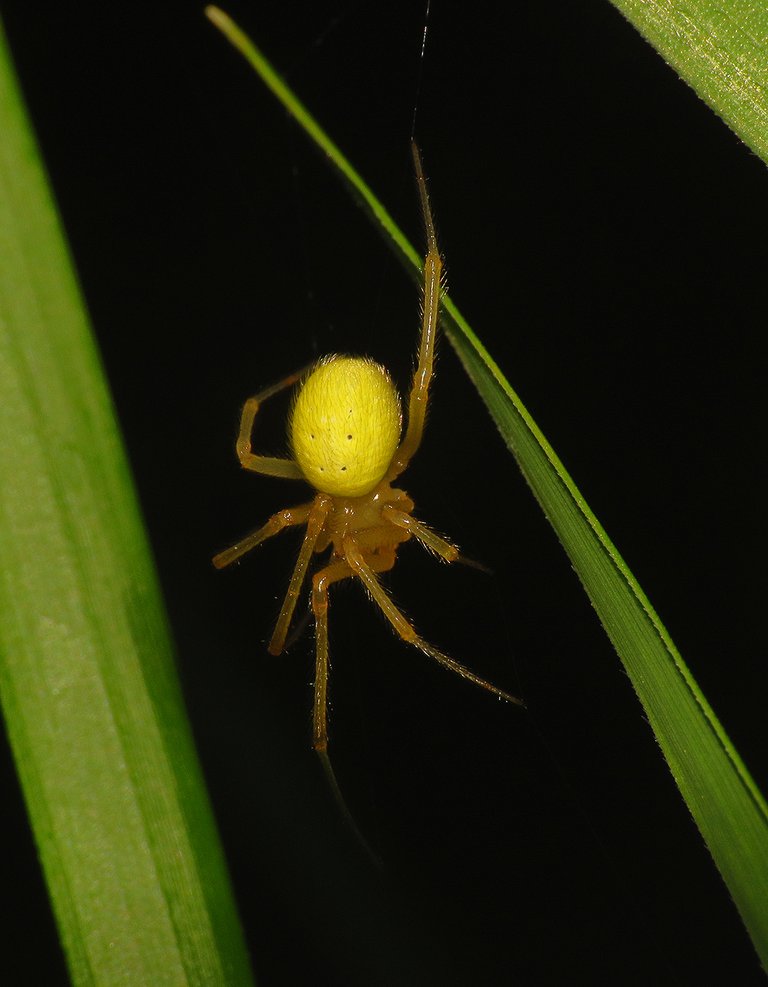
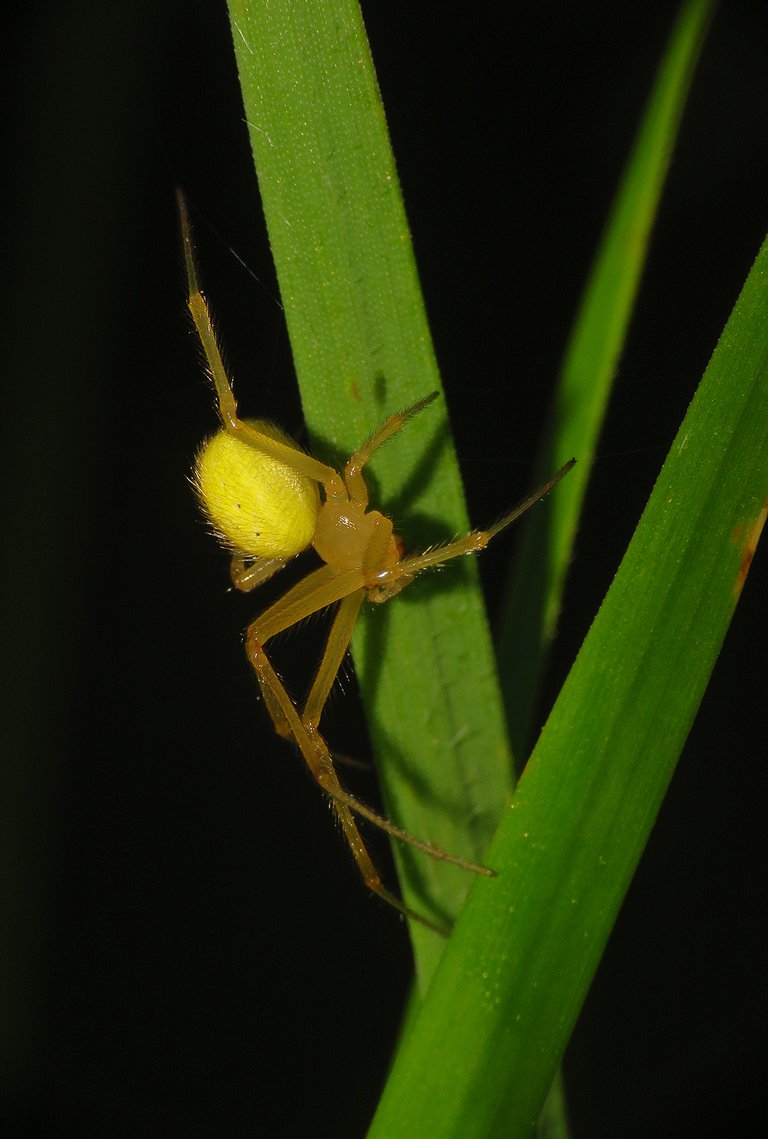
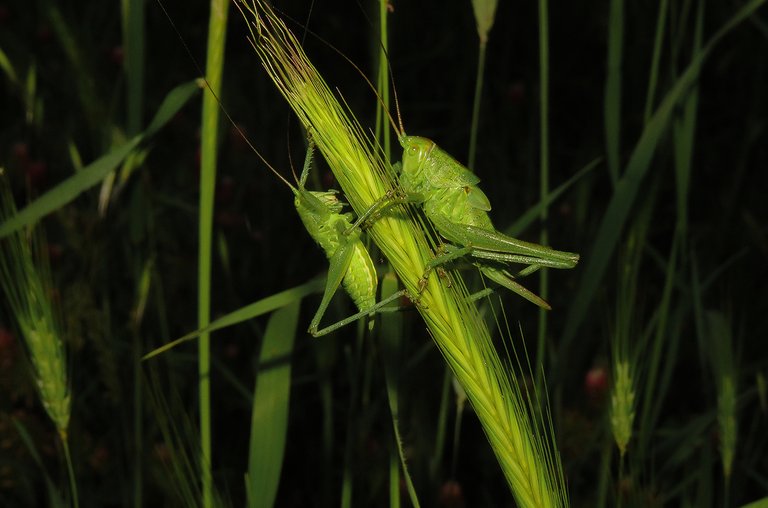
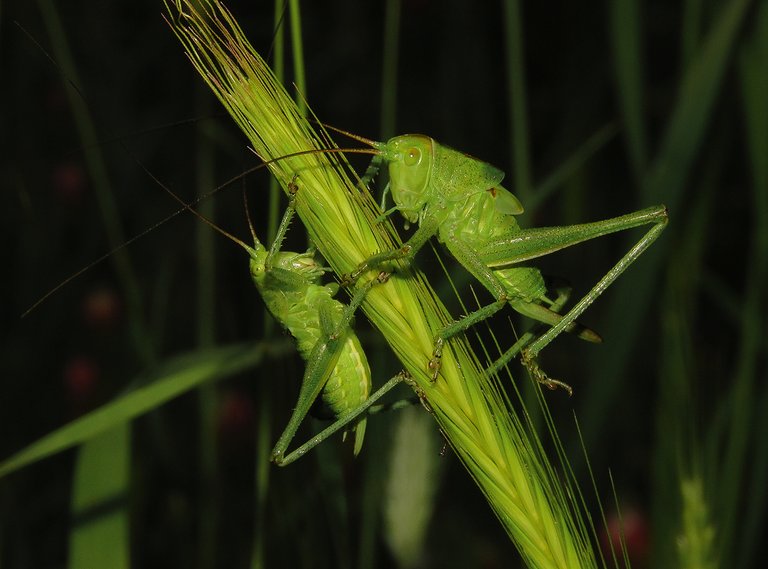
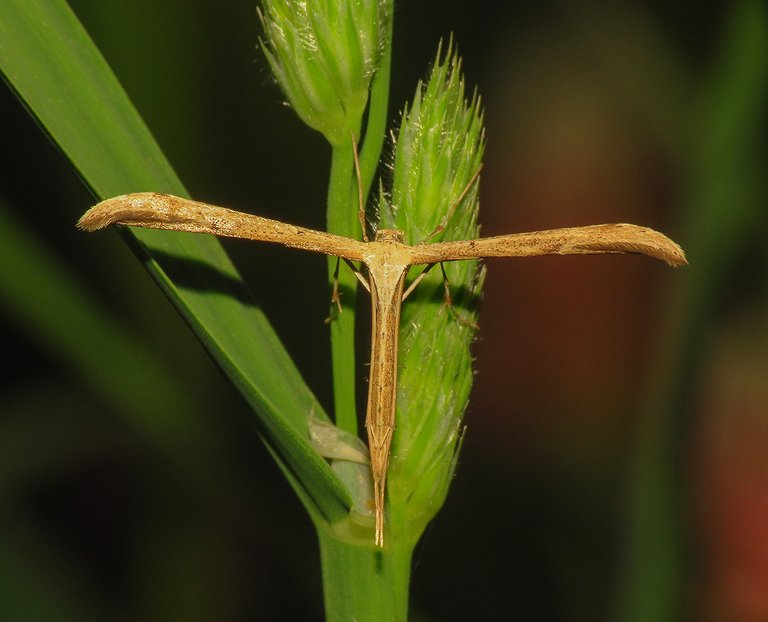
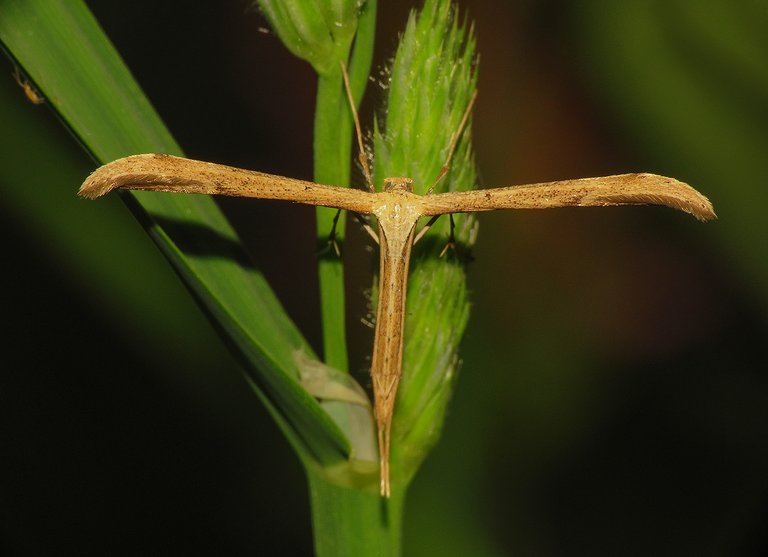
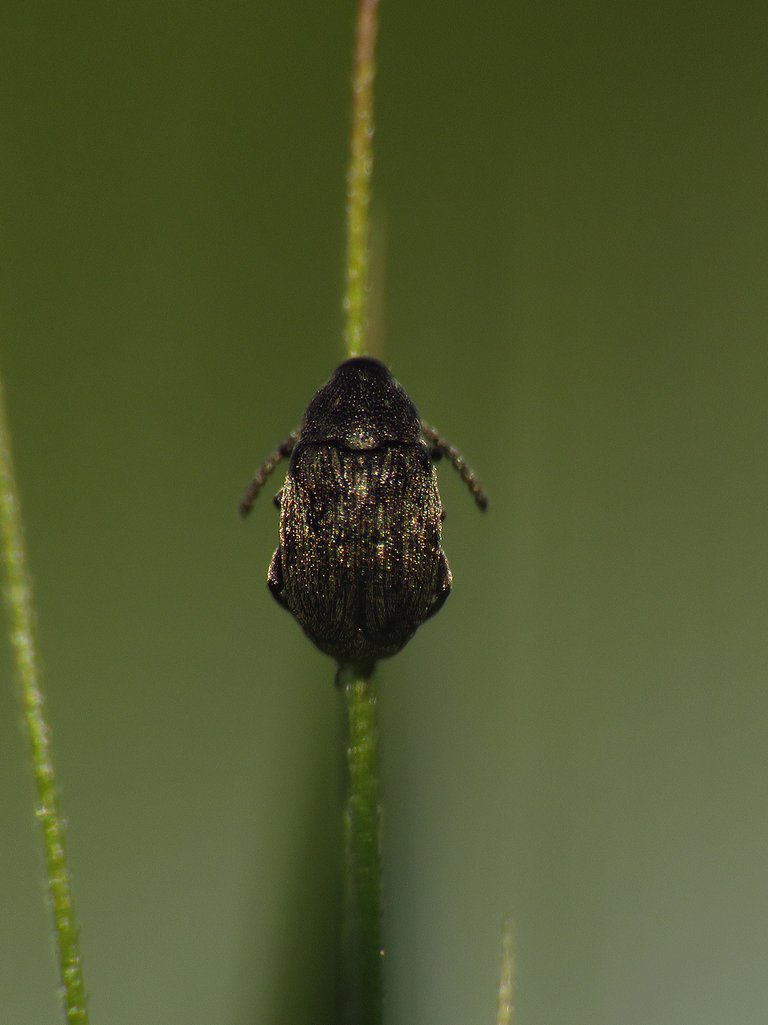
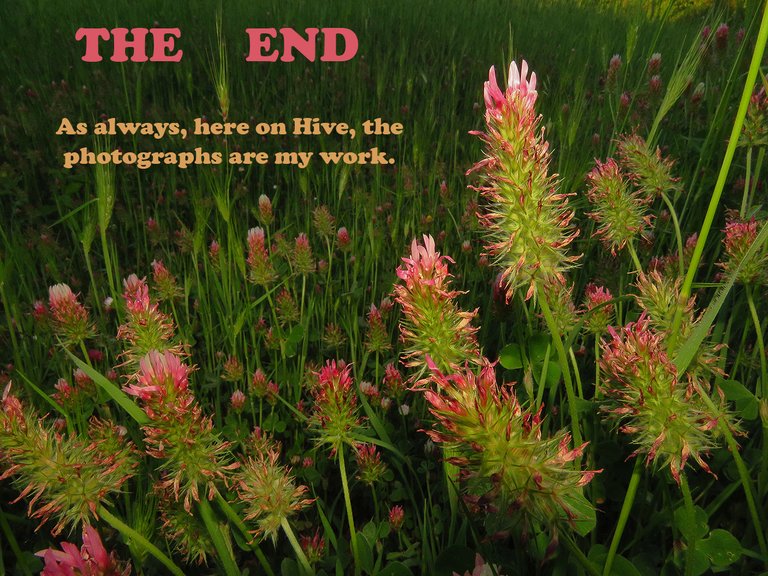
🎉🎉🥳 Congratulations 🥳🎊🎊
Your post has just been curated and upvoted by Ecency
keep up the good work
Join us on the Ecency Discord
Photos of insects I really like to see it. Looks like that look so cool
Beautiful photography dear
from the look of things i guess this is the best season to witness the beauty of flowers, the bush cricket is it also called a grasshopper?
Yes, this is the most colorful time of the year here where I live, and the scent in the air is also at its best becouse of many wild flowers.
Yes, bush crickets are also called grasshoppers, along with the related locusts that have short antennae and some other differences.
Ohhh i see very well understood with thanks 😊
Lovely photos of the plants and local insects. The butterfly and spiders really stand out. Some colourful insects try to show off their coats too. It’s a wild world out there in the meadow. The ecology is still in good shape so there are so many kinds of insects. I hope to attract some bees and dragonflies to my garden one day!
🙂
Hello dear friend @borjan, how are you?
It was definitely worth the 8-kilometer trip to visit this beautiful natural space, as you found some gorgeous specimens.
What a beautiful flower, Trifolium incarnatum! I love the combination of its colors.
The number of insects this place is home to is incredible. Beautiful macro shots.
Have a wonderful weekend.
Thank you. 🙂
Really love this one, its legs(?)at the sides are quite impressive.
Great macro shots!
Yes, these moths with narrow wings have a peculiar, interesting shape. 🙂 Glad you like the post.
For insects that could hurt you they all look so good and the macro lend sure does a lot.
Great shot friend and thanks for sharing.
🙂
!discovery 30
This post was shared and voted inside the discord by the curators team of discovery-it
Join our Community and follow our Curation Trail
Discovery-it is also a Witness, vote for us here
Delegate to us for passive income. Check our 80% fee-back Program
The cricket is so cool, thanks to your macro photos we have a great opportunity to take a closer look at a piece of nature 👍
Such a peaceful and lovely walk! I really enjoyed the way you captured the little details, like the butterfly and that shiny green fly. Nature has so much beauty when we slow down to notice it. Thanks for sharing!
I really like to see the insects you take photos
Amazing shots @borjan friend!!!!
all from very good photography results.
Thank you. 🙂
lovely photos as always. I love taking my time to look all of it because they are so beautiful without doubting.
Your photos are filled with so much beauty
I love them!
Those crimson clover flowers are pretty, nice find there. You caught all sort of spider images in there, those hatchlings were impressive just by the huge number! Few will survive to adulthood, the way of the wild. That spider cannibalism was an impressive shot, not small spiders in that scene.
You've tried the lamb's lettuce before? Kind of like dandelions being used in salads and teas around here. Excellent images you caught on the way home there!
Yes, Dandelions are frequently used here as well. I ate lamb's lettuce many times. And not only the wild one. There is a cultivated version of the plant that can be bought in the supermarket.
Photographs of insects and spiders are always at their best when some interesting behaviour is captured. 🙂 For me, those moments when some interesting action is going on are the most exciting photo shooting experiences.
Greetings @borjan ,
What an informative, beautiful post....thank you for splendid photography.
Kind Regards,
Bleujay
Thank you. 🙂 Glad you find this macro stuff interesting.
wow, some really good shots. I found the one of the cricket to be most interesting, but All good. 👊😉
🙂
Yes.. they all very cool pix! 😎👊
Wow this pictures are so nice thanks for sharing I really like it
🙂 Thank you. Glad you like the post.
https://x.com/lee19389/status/1923508743846633617
#hive #posh
These are some truly amazing photographs. You caught so many of the small details, which can hardly ever be appreciated with the naked eye. I especially enjoyed all of the action you came across, particularly the spider fights. so cool! Thank you for sharing!
Thank you. 🙂 Glad you find this macro stuff interesting. The photographs that show interesting behaviours always stand out from the rest ... and for me, are the most exciting ones to take.
Do you use a tripod when you take the photos? Any time I try to take a photo of a small insect, the camera is always shaking a bit too much and it ends up blurry. Sorry if this is a dumb question haha I had never heard of macro setting on the camera until just now reading about it.
It's not a dumb question at all. I haven't used the tripod in the last ten years or so. I used it before. Here in my area, there is almost always some kind of wind... and even if it is a gentle breeze, it shakes things too much for macro. The tripod doesn't help in those situations. That's why I use the flash most of the time, to get the high shutter speed that freezes things and allows me to shoot without a tripod. Furthermore, most interesting situations with insects and spiders involve them moving around, often pretty quickly, so the tripod wouldn't help much there either.
Sometimes I get the opportunity to shoot in ambient light, with no wind around, and with a longer exposure ... but I feel too lazy to drag the tripod around, so I put the camera on the ground or my knee and try to be still enough with steady hands ... with a bit of practice and exercise, one can get better at this .. just like shooting with a gun or something ... most pictures end up blurry, but if one or two are sharp - the mission is accomplished 🙂
Another thing ... different cameras have different stabilizer systems that make that shaking more or less present, that's another thing to consider.
I really appreciate the insight. It totally makes sense that you would take many photos that may come out blurry so that you ultimately end with a few perfect shots. I think so often we see a beautiful final shot, but forget about all of the failed attempts that may have come before it. In a way, you could say the same about life, we usually only see one side of a situation and hardly consider all that led up to it.
Such useful photos, so inspiring!
🙂🕷️🕸️🌺🕷️
I don't think many people can describe the silence and small wild insects in nature so charmingly.❤
Thank you. 🙂 That's a big compliment.
I had a set back and was feeling down. I said to come to your page and get a dose of therapy and you delivered as usual. Thanks for the beauty you bring to our screen and the explanation that drives them home. I love that aphid and the spiderlings pictures a lot . Thanks again
🙂🕷️🕸️🕷️🙂
https://x.com/jewellery_all/status/1923783966999577021
#hive
Images so fine. Nice shot
🙂 Thanks. Glad you like this post filled with insects and spiders.
I can see the beauty of different types of insects in the animal world through your posts which I really like. Each picture is very beautiful and interesting and there is natural beauty that I have seen. I wish you success.
Thank you. 🙂 All the best to you, too. Have a great day.
Oh My God . It's so beautiful this photographys, are amazing. Bendiciones.
🙂

Hello borjan!
It's nice to let you know that your article won 🥇 place.
Your post is among the best articles voted 7 days ago by the @hive-lu | King Lucoin Curator by keithtaylor
You and your curator receive 0.0000 Lu (Lucoin) investment token and a 9.32% share of the reward from Daily Report 666. Additionally, you can also receive a unique LUGOLD token for taking 1st place. All you need to do is reblog this report of the day with your winnings.
Buy Lu on the Hive-Engine exchange | World of Lu created by @szejq
STOPor to resume write a wordSTARTThank you. 🙂 Glad you like the post.